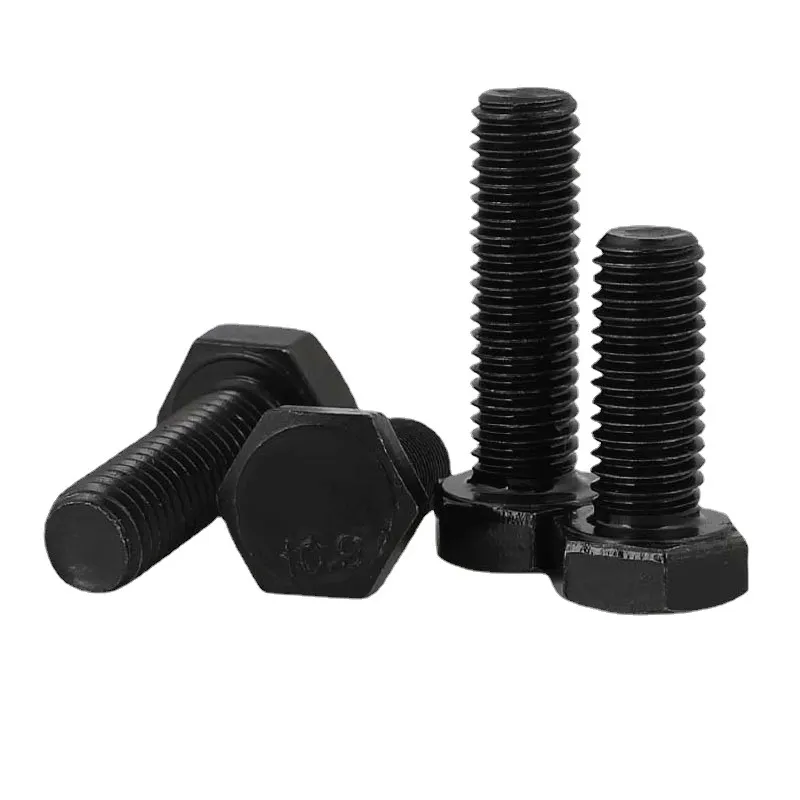

metric fasteners
Nov . 22, 2024 07:39 Back to list
metric fasteners
Understanding Metric Fasteners A Comprehensive Overview
Metric fasteners play a crucial role in the global manufacturing and construction industries. These small but vital components are essential for securing parts together, ensuring stability, and providing structural integrity across a wide range of applications. In this article, we will explore what metric fasteners are, their advantages, different types, and how they compare to imperial fasteners.
What Are Metric Fasteners?
Metric fasteners are standardized components that are measured using the metric system, which is based on units such as millimeters and centimeters. This system contrasts with the imperial system, which uses inches and pounds. The adoption of the metric system in engineering and manufacturing has gained momentum worldwide, leading to the widespread use of metric fasteners in different applications.
Advantages of Metric Fasteners
One of the primary advantages of metric fasteners is their global compatibility
. As more countries adopt the metric system, having fasteners that conform to these standards minimizes the risk of discrepancies in manufacturing and assembly processes. This uniformity enhances collaboration in international projects, making it easier for companies across the globe to work together.Another significant advantage is precision. Metric fasteners are often available in finer increments than their imperial counterparts, which allows for more accurate fits and tighter tolerances. This precision is essential in applications where safety and reliability are paramount, such as in aerospace, automotive, and heavy machinery.
Types of Metric Fasteners
Metric fasteners come in various forms, each serving specific purposes. Some of the most common types include
metric fasteners

1. Bolts Metric bolts are widely used for fastening two or more components together. They have a head at one end and a threaded shaft, allowing them to be secured with nuts or threaded holes. Common classifications include hex bolts, carriage bolts, and eye bolts.
2. Nuts Typically used in conjunction with bolts, metric nuts feature internal threads that correspond to the external threads of bolts. Various types include hex nuts, lock nuts, and flange nuts, each designed for specific applications and load requirements.
3. Screws Metric screws are used for joining materials without the necessity of nuts. Variants include machine screws, wood screws, and self-tapping screws. The design of screws allows them to create their own threads in the material, which makes them versatile for many applications.
4. Washers These flat discs are used to distribute the load of a fastener, preventing damage to the material being fastened. Metric washers can be plain, lock, or flat, and are essential in creating stable connections.
5. Anchors Metric anchors are often used in concrete or masonry applications where traditional fasteners cannot be reliably used. They provide a secure means to fasten items to hard surfaces and are critical in construction projects.
Comparison with Imperial Fasteners
While both metric and imperial fasteners have their applications, the difference in measurement systems can lead to compatibility issues. When working with equipment or machinery that requires a combination of both types, the risk of using incorrect fasteners increases, potentially leading to equipment malfunction or safety hazards. As industries continue to globalize, a noticeable shift towards metric fasteners is occurring, particularly in regions where standards are converging.
Conclusion
Metric fasteners are indispensable components in modern manufacturing and construction. Their global compatibility, precision, and variety make them an ideal choice for countless applications. As industries continue to evolve and adopt new standards, understanding the role and significance of metric fasteners will be crucial for engineers, manufacturers, and anyone involved in assembly processes. Proper selection and application of these fasteners contribute not only to the success of individual projects but also to the safety and reliability of products in numerous fields. Embracing the metric system and its associated fasteners is more than just a trend; it reflects a commitment to quality, consistency, and collaboration in an increasingly interconnected world.
Latest news
-
High-Strength Hot-Dip Galvanized Bolts-Hebei Longze|Corrosion Resistance&High Strength
NewsJul.30,2025
-
Hot Dip Galvanized Bolts-Hebei Longze|Corrosion Resistance&High Strength
NewsJul.30,2025
-
Hot Dip Galvanized Bolts - Hebei Longze | Corrosion Resistance, High Strength
NewsJul.30,2025
-
High-Strength Hot Dip Galvanized Bolts-Hebei Longze|Corrosion Resistance, Grade 8.8
NewsJul.30,2025
-
Hot Dip Galvanized Bolts-Hebei Longze|Corrosion Resistance,High Strength
NewsJul.29,2025
-
High-Strength Hot Dip Galvanized Bolts - Hebei Longze Metal Products Manufacturing Co., Ltd.|corrosion resistance&high strength
NewsJul.29,2025

